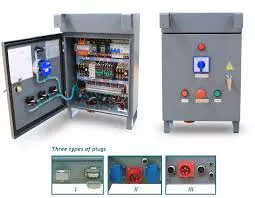The Importance of Automotive Wiring Harness Wrap
In the intricate world of automotive design and manufacturing, the wiring harness is a pivotal component that plays a crucial role in the functionality of a vehicle. Whether it’s transmitting electrical signals to power windows, connecting sensors for crucial safety features, or enabling the vehicle's infotainment system, the wiring harness serves as the nervous system of the automobile. To ensure its longevity and reliability, automotive wiring harness wrap is an essential element that cannot be overlooked.
What is Wiring Harness Wrap?
Automotive wiring harness wrap refers to the protective covering that encases the bundles of wires and cables found in a vehicle. This wrap is designed to provide insulation, physical protection, and organization for the wiring bundles, which can be subjected to various stresses, including heat, vibration, and exposure to chemicals. The wrap not only prevents damage to the wires but also reduces the risk of electrical shorts and failures, which can lead to costly repairs and safety issues.
Types of Wiring Harness Wrap
There are several types of materials used for automotive wiring harness wrap, each serving specific purposes
1. Heat Shrink Tubing This material provides strong protection against environmental factors. When heated, it shrinks to tightly fit around the wire, creating a snug, protective seal that guards against moisture and debris.
2. Fabric Tape Often used in conjunction with other types of wraps, fabric tape is flexible and provides robust resistance to abrasion. It is particularly useful in applications where wires are subjected to frequent movement.
3. PVC and Polyethylene Sleeves These sleeves are lightweight, versatile, and offer good protection against both physical damage and chemical exposure. They are commonly used in harnesses that need to withstand challenging environments.
automotive wiring harness wrap

Benefits of Using Wiring Harness Wrap
1. Protection from Environmental Factors Automotive wiring harnesses are exposed to a diverse range of environmental conditions, including extreme temperatures, moisture, and chemicals. Wrapping the harness provides a barrier that protects the wires from deterioration and potential failure.
2. Enhanced Durability The wrap can significantly extend the life of the wiring harness by shielding it from abrasions and impacts. This durability is especially important in high-performance vehicles, where the electrical systems must withstand greater stress.
3. Improved Organization Harness wraps can help keep wires organized and prevent them from tangling. This organization simplifies repairs and modifications, allowing technicians to quickly identify issues and make necessary adjustments without the risk of damaging other components.
4. Electrical Insulation Effective insulation is critical for preventing electrical shorts and ensuring the safety of the vehicle's electrical system. Properly wrapped wiring harnesses help maintain electrical integrity and performance.
Installation Considerations
When installing wiring harness wrap, it is vital to ensure that the wraps are applied securely and uniformly. Overlapping the wraps can provide added protection, but care should be taken to avoid compressing the wires excessively, which could lead to stress and breakage over time. Additionally, it's essential to consider the heat dissipation needs of the wires, ensuring that the chosen wrap material can withstand operational temperatures without degrading.
Conclusion
As vehicles become increasingly reliant on complex electrical systems, the importance of automotive wiring harness wrap cannot be overstated. This simple yet effective protective element safeguards the integrity and functionality of wiring harnesses, ensuring that vehicles operate smoothly and safely. By understanding the various types of wraps available and their benefits, both manufacturers and vehicle owners can make informed choices that lead to improved vehicle performance and longevity. Emphasizing the importance of wiring harness wrap in the automotive sector ultimately contributes to safer, more reliable vehicles on the road today.
-
XIANGFAN Rubber Tape-Ultimate Solutions for All Your Insulation NeedsNewsJun.24,2025
-
XIANGFAN Rubber Tape-Protection for Industrial and Residential ApplicationsNewsJun.24,2025
-
XIANGFAN Rubber Tape: Superior Safety and Sealing for Demanding EnvironmentsNewsJun.24,2025
-
XIANGFAN Rubber Tape: Reliable Solutions for Every Electrical ChallengeNewsJun.24,2025
-
XIANGFAN Electrical & Industrial Tape: Powering Reliability Across IndustriesNewsJun.24,2025
-
XIANGFAN Electrical & Industrial Tape: Excellence in Every ApplicationNewsJun.24,2025
